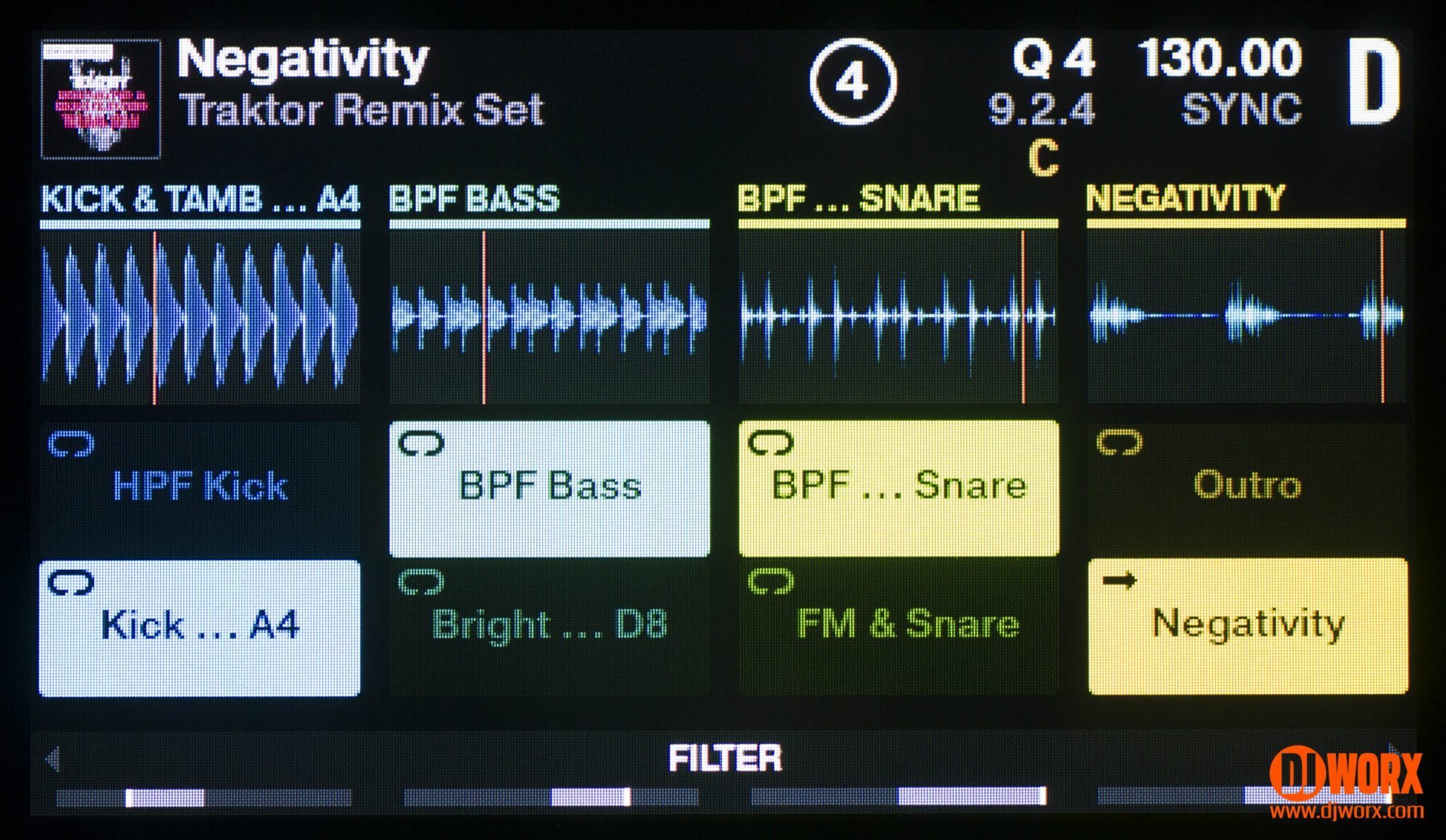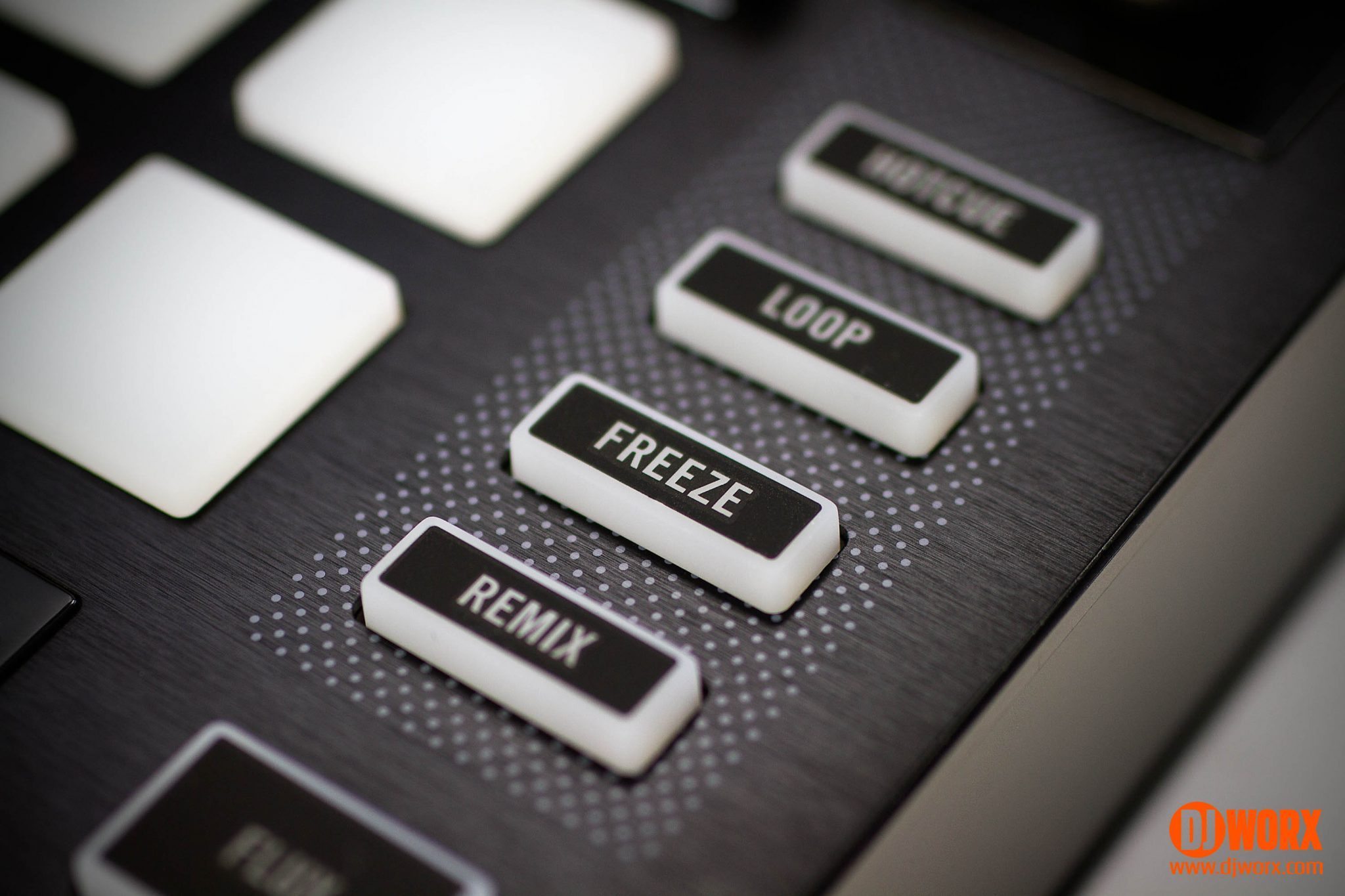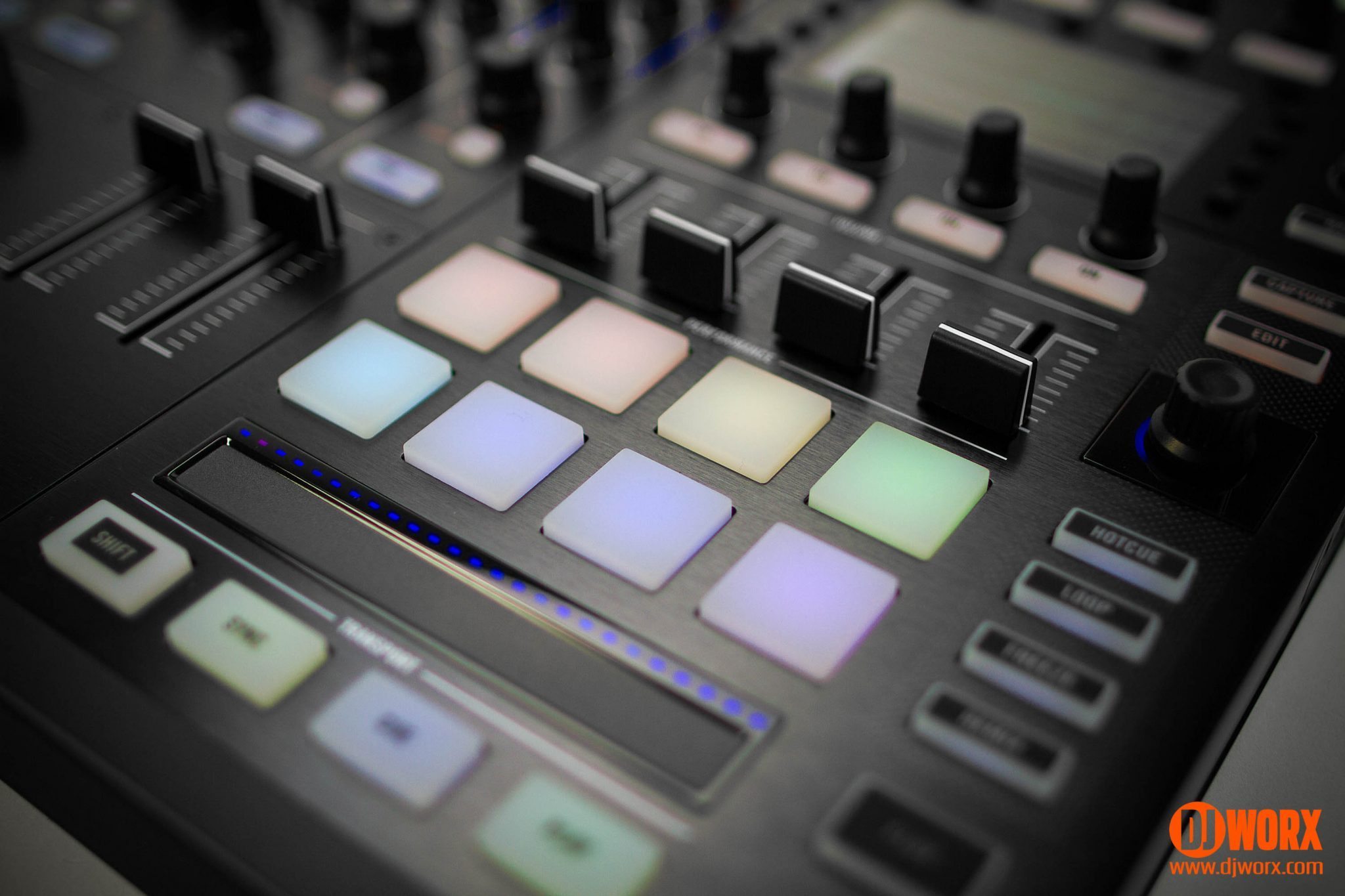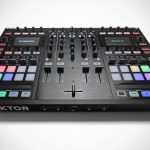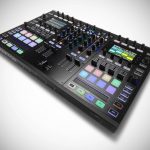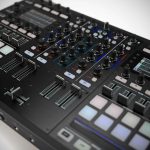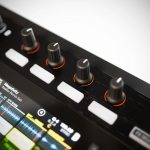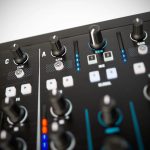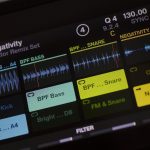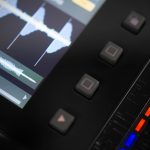Link: Native Instruments | Price: $1199/€1125/£899 | Manual: PDF
Oh the hype, the glorious hype. For months now (eons, it seems), we’ve been told about the #FUTUREOFDJING. I have concluded it requires all caps because science. And the feedback we saw, the vitriol and bile thrown at the internet, mixed lovingly with the love and excitement of the converted, created a beautiful mess none of us had any idea what to make of. We had conversations on this site amounting to the death of DJing, and the future of DJing, and how nothing will change at all. But we can’t know that until we get our hands on it and put it through its paces. Native Instruments was kind enough to provide us with a Kontrol S8 to review and, while it was not a perfect experience, I have definitely garnered some insight into what Native believes the future of DJing is. After spending a few weeks with the controller and dealing with a lot of its mixture of genius and insanity, as well as Traktor Pro 2.7 and its general frustrations mixed with awesomeness, I figure it’s time to finally write this thing down.
The Future of Reviews
This is usually the place where we discuss first impressions, and the unboxing process. Honestly, we’ve spent so much time talking about the Kontrol S8 in the lead up to getting our hands on it that I don’t think it’s really appropriate to discuss what it’s like to take it out of the box. Who really cares, right? My only comment is that while I knew it was a large controller, the pictures and video don’t really show how much table space it really does take up. It’s heavy and deep, but I really wish they provided little legs to raise it to turntable height, like the Electrix Tweaker, or a case like the X1MK2. Maybe that doubles as a carry case. Maybe?
And as a note, I’ve been comparing the Kontrol S8 to the device I think it most closely resembles: the Xone:4D. I’ve played with the 4D and always thought it was a huge, overwhelming mixer/controller. The S8 is wider, but feels a lot better spaced out and more elegantly designed. That’s not a comparison of the audio, since I personally think Allen & Heath make the best sounding mixers ever, but that’s a personal taste more than anything.
Audio and Mixer
We are going to start at the top with what has been requested to hear about the most, the way it sounds. The audio interface fits with NI’s standards. It’s loud and crisp, the headphones can pump out some great volume and the mics sound great. I hooked my turntables up to it and went playing internal decks to vinyl seamlessly, and when I switched the inputs by pressing the Traktor icon under the Gain knobs, there was no audible click or pop, a complaint with earlier NI gear. When using it with Traktor these features are controlled by swapping the Deck Type to Live Input, and it still uses the virtual mixer in the software. When using it without Traktor it uses the onboard mixer, which sounds just fine. The filter is the same as the Z2 and while I like it, others have complained, so your mileage may vary. The mixer sounds fine when you’re not using Traktor, and the EQs work as full kills.
I did run into an interesting feature that I think we should all be grateful for in a controller/mixer like this. I turned on the S8 and started playing vinyl. Later I decided I wanted to switch to Traktor so I turned Traktor on while the records were playing. I expected to get some sort of click or pop, or have the deck overtaken by Traktor and switched to a Track Deck. It didn’t. The vinyl kept playing, Traktor recognized it as a live input and switched the deck accordingly. So, you could lay this down in the beginning of the night, have your friends on CDJs or Turntables going nuts across all four decks, and when you want to use Traktor you can hook your computer up, and move seamlessly to your set without needing to worry about transitioning. Traktor is very smart with the Kontrol S8 and it makes using it that much easier.
I hooked the MIDI in and MIDI Out to Maschine (separately, of course) and tested the clock sends. On a Windows machine this was great since we couldn’t take advantage of Traktor’s virtual MIDI ports. Syncing in both directions was seamless and easy, though it does require the standard set up it always has. Unfortunately, since the controller doesn’t have a USB hub you need to make sure you have enough USB ports on your computer, and if you’re using an external hard drive you may be out of luck.
The crossfader curve knob is depressed into the controller and can’t be pulled out. If you move it all the way to smooth it starts noticeable fading out shortly after the middle of the fader. As you move closer to the sharp cut side, though, I didn’t notice any difference once I crossed the halfway part. After that it was all the same.
I mainly used the XLR outputs which were great, and we ran the quarter-inch outputs at my gig and it sounded great as well. Since we brought it up in the NV review, the quarter-inch mic jack does not provide phantom power. If you don’t know what that means then look it up, and don’t use another microphone until you do. Thankfully, the mic is never run to the booth output, so you never really need to worry about on stage feedback.
Crazy Speculation
On the controller side of the mixer, they left out a key piece of Traktor 2: the Loop Recorder. I’m going to speculate here, but I think this means that Traktor 3 is going to get rid of the Loop Recorder and we are going to see that Capture button get a LOT more important. Can this mean that we will be able to record directly to a remix deck cell? I sure as hell hope so. It would make the remix decks both more robust and feel more like a classic sampler, both of which are good things.
Screens
Pretty much the most speculated upon, and talked about feature, ever in a DJ controller, the screens on the Kontrol S8 do not disappoint. I spent very little time using the NV myself, so I can’t really make a fair comparison, but the S8 screens are fantastic. They look great, and the integration and modality is wonderful. Using them to see the two rows of remix decks are clear, the colors are bright and readable. Selecting any of the knobs surrounding the screens brings up panels for the effects banks if you’re using four. The bottom row can be changed to control different features of the remix decks including pitch, filter and activating fx send. This integration is not clear, but once you start using it everything starts making sense.
The screens are surrounded by four buttons and an endless encoder which activate different modes. I’m going to go over each of those starting from the upper left and moving counter-clockwise.
- The first button activates color preferences, but those didn’t actually do anything outside of the preferences menu. Nothing on the screen actually changed.
- Under that is the button to activate Pitch control. The endless encoder will move the pitch up and down with a readout on the screen of the current tempo. This clicks at a 0.01% resolution, and if you hold shift you can move the pitch fader by 1.0% increments. This is different than the X1MK2 integration, and there doesn’t seem to be a lot of documentation regarding it, so if you didn’t know, now you do. Holding the Back button will reset the pitch, bringing it in line with the Key knob.
- Under that is the Key button, which makes the knob control the Key. You get a pop up screen which shows you the current Key Knob Value as well as the current key. As you turn the knob both of these values change: the Key Value goes up in increments of 1, and the actual key readout changes accordingly.
- The bottom left and bottom right buttons are for scrolling the fuctions of the four knobs and buttons below the screens. These only work if there is a remix deck available. They will change the four knobs from Effects (if using 4 effects banks), to keylock for each remix slot, filter activation and control and effect send activation.
- Continuing on, the to middle buttons on the right side of the screen change the zoom of the waveform. This gets about as close as it does in Traktor, which makes editing beatgrids on the controller a bit easier. This does not change the zoom of the deck in Traktor, but is independent.
- The upper right hand button is a window button which lets you see a preview of what’s going on in the other deck. You can see your currently playing remix cells or the full deck activity that’s going on. This wasn’t super useful, but I didn’t have to glance at the screen to get quick information.
So yes, you can control tempo from the S8. It’s not a fader but… do you really need one? It’s there, you can use it. Yay, DJing isn’t dead.
By holding the knob the browser pane comes on the screen, but doesn’t activate the Browser Only mode in Traktor. This isn’t that big of a deal, but it does encourage me to look at the screen on the controller as opposed to the laptop screen. There are five columns visible: Album Art, Title, Artist, BPM and Key. These cannot be changed or moved as of now. You can sort these columns by turning the first knob below the screen, though, so that’s something. Being able to customize these columns would be great, so I could get rid of Key and instead see my Genre, or however I wanted to do it. The screens are small, though, so there’s only so much you can fit.
You also can’t scroll any faster than one track at a time and, well, that’s just unacceptable, and brings me back to the laptop screen over and over. If I’m looking at tracks at 97 BPM and want to do a tempo change to 125 BPM I have to either scroll track by track (which is absurd) or go back to the screen to scroll to where I want to be and make sure I select a track with the mouse before I scroll with the controller. As a note, this will be fixed in the next version of Traktor, so holding the Shift button will allow you to page up and down. I can navigate through my playlists and “smart lists” Traktor has, so I can usually find what I need. I can’t search from the controller, though, so once again that brings me back to the laptop screen. The Deck readout also is not customizable so if I want to see Beats to Cue or anything special I have in my Deck Layout I have to look at the laptop as well.
The touch-sensitive knobs, though, make using the different layers of the screen very easy. If I want to see my effects information I just have to touch a single knob and the information overlays just a little over the deck information so I can still see my waveform. If I’m using a rhythmic effect like the Beatmasher or Gater the information reads out in segments as opposed to a smooth fader, making it easier to understand the lengths I’m working with than looking at a virtual knob in Traktor on my screen and trying to see whether I’m at 1/4, 3/8 or 1/2. Selecting effects requires a little noodling with the interaction. If you press the Select Effect button the entire screen changes and you can select the effect bank type, insert or send, and then what the individual effects are. You have to press the On button to tell the S8 which effect you want to select, but instead of using the knob directly above it you have to go back to the endless encoder on the side of the screen to scroll and press to select. It’s not bad, it’s just extra, unnecessary steps to get to things that could be right where your hands already are.
Native Instruments hasn’t created a tool that lets you hide the laptop screen, but they’ve given you instant access to a lot of easily readable information that makes you need the laptop screen less. It’s easier to move it off to the side and with enough prep you can completely avoid it. But I don’t DJ like that, and if I’m improvising I still definitely will need the laptop screen. They need to allow people to change the colors visible on the screens, as well as the waveform types. All of that being said, the amount of information and functionality they have put in the screens is fantastic, they look great, and are extremely useful.
Controls
The Kontrol S8 is full of controls. I mean, the thing is huge, and Native Instruments has managed to put just about every single control you could want in Traktor on it. There are still layers, like every previous controller NI has put out, but there feels like there’s more on its face than before, and that makes sense since this unit is a lot more complete than anything device NI has released. The performance pads feel like bigger F1 pads, and I thought the F1 pads were the best button triggers I’d ever used. The S8 does not disappoint on that end either. The pads have 4 different layers: Hotcue, Loop, Freeze and Remix (only available if you’re using Remix Decks).
Hotcue is the standard mode, press to set/trigger a hotcue, hold shift to delete. You get color feedback for all of your hotcues (green for loop, white for beatgrid, etc.) just like we’re used to. Loop is set up in a very interesting way, though, and kind of changes the way the standard layout across all other controllers have handled it in the past. NI has moved loop control to an endless encoder almost universally across all of their controllers, but there’s a loop section for the pads on the Kontrol S8. There is still a dedicated Loop knob for each deck, with a 4 segment LED ring which spins when the loop is active. Unfortunately, this LED doesn’t actually give you any information, since the segments are not sync’d to the beat of the track. That would have been a killer extra feature, since I’d be able to see in a moving segment what position of the current loop I’m in. Alas, it’s not possible. The Freeze Mode works as expected, but as I mentioned in the video I made of mapping Freeze Mode, NI has to integrate the feature better using loops and how it interacts, since it can be a little frustrating. The only complaint I have about Freeze Mode that’s substantial is how they handle looping within the freeze. If I hold two pads down on the controller (say pads 3 and 7) it will create a mini loop within those segments. If, however, I want to loop pads 7, 8, 1 and 2, I can’t. There were times when it would have sounded a whole lot better, but there’s nothing I could do about it.
Remix Deck control is improved from almost any MIDI map I’ve been able to create, mainly because its direct integration and doesn’t take a million hours to map the whole damn thing. The four volume faders under the screens only work with Remix Decks, and make using and controlling the remix decks while not focused on the deck very easy. The Remix Mode for the pads gives you the ability to almost completely control the remix decks without needing to go into the Deck for them, and that makes them a whole lot more intuitive. The screens won’t change unless you swap Decks, but that isn’t actually all that bad if you’re not doing anything really intense. The volume faders aren’t really in the way, and if you’re not using remix decks they don’t really take up any unnecessary space. I actually barely noticed they were there when I was just mixing on four decks, and that’s a good thing. I never felt like there was some important feature it was missing by having them there and not getting used.
The touch strip is a nice compromise if you’re not going to be using CDJs or turntables. It gives you good scrolling interaction, and you can needle drop. I wouldn’t generally recommend needle dropping this way since it’s kind of hard to tell where it’s going to go with any accuracy, but scrolling through is definitely useful. When the track is playing it works as pitch bend, so you can mix to an external signal of (gasp) manually beatmatch. The sensitivity is controllable in the preferences and works exactly as you’d expect. A lot of the knobs are touch-sensitive, but only in relation to the screen. You can’t touch the knobs to activate effects, or kill EQ, something the NV integrates very well. Usually I have a static set up of effects that never change, so having the ability to just activate them by touching the knobs would add a different layer of performance. Since the technology is already there I can’t see it being something out of the question to integrate and make me super happy.
Oh, and please put a damn Record button on your controllers. It’s just a button and a knob and almost no one thinks of doing it. Just, please.
The buttons all have the noticeable click I’ve come to love in Native Instruments controllers. The knobs all have a uniform resistance, and the sheer amount of endless encoders makes using the various layers a breeze. All in all this is a solid controller with a great deal of weight that feels like it could be used for a while. The LEDs are bright and clear in a well lit room and a dark club. While there are a lot of places they could improve the controller’s integration with the software, NI has built a physical controller which meets the high standards they have set for their devices.
In The (Da?) Club
It’s kind of unreasonable to take a controller like this, even with the issues I had with Traktor, and not bring it to a club and use it live as the real test. I mean, we buy these things with the aspirations of using them to make other people dance, right? And we are going to do that in the most unreliable place of all: the club. So I boxed up my Kontrol S8, since I don’t have a bag for it (yet) and brought it to a party I run in the Boston area. We decided to use it as the primary mixer, and hooked two CDJ-1000’s into it for my friend to use so I could see how swapping it back and forth would work, and how seamless everything would be. And we got on the mic, in classic DJ fashion, and it sounded great. If you are planning on using the mic inputs, though, the gain runs really hot, and the bass NEEDS to be killed or else feedback is going to destroy you. So, keep those things in mind. And remember that the XLR input is mic 2, and the quarter inch input is mic 1. I didn’t notice that at first, because I apparently I can write all these words but I can’t read.
The experience was almost perfect, but there were some really glaring issues. The Kontrol S8 performed admirably but there were a few problems that Native Instruments needs to address before I can bring Traktor out again and feel safe I won’t have any issues. While my friend was spinning on the S8 it performed absolutely fine. He didn’t do anything fancy, but he mixed and blended, and it sounded fantastic. The EQ and everything was running through Traktor, so when I took over it was as simple as swapping inputs on the face of the S8 and moving on. It did exactly what we wanted it to. Just keep in mind that with Traktor running the S8 is still routing audio through Traktor’s virtual decks. It is not working as a true analog mixer. With that being said, other than the hub, the only other thing that would have been really cool in a live situation is a second USB port for a second laptop, but this is far from a make-or-break feature. It’s more something that Native Instruments, but this is a great place to make feature requests, after all.
I did experience one crash, which I’ll get into in the next section, but once that was rectified everything ran really smoothly. The LEDs were really clear, and the screens were super easy to read in the club. I did find myself needing to go back to the laptop often, though, to sort and search for artists, unfortunately. I could think of a few ways to integrate searching into the Kontrol S8, especially using the extra knobs when in “browse mode” but it wasn’t that big of a deal. I did spend a lot less time looking at the laptop screen and was instead of focused on the controller, since I could zoom the wave forms to make sure the mix was going to hit the way I wanted. We aren’t yet at the point where the laptop is just a big hard drive, but we are getting closer. And, honestly, the S8 was a breeze to use and, issues with Traktor notwithstanding, it was really fun to have all that control at my finger tips.
Some Notes on Traktor 2.7
So after all of those various words regarding the S8 I wanted to expand a bit on my experiences upgrading to Traktor 2.7. We debated on making this a separate article, but we believe that since using the S8 is so entwined with using Traktor 2.7, it’s hard to discuss one without the other. I have been using Traktor for years and never before have I had as frustrating experience updating any music software. As a note, I’m using Windows 8.1 with a quad-core ivy bridge processor and more RAM than should be needed for anything. The upgrade to 2.6 saw a very strange reaction with my load meter, but I didn’t experience any changes with the actual application. For example, now when I use the mouse on any virtual control to drag it up and down, like a volume fader or filter knob, it instantly jumps to either end and I can’t move it up and down. While I know these applications go through rigorous testing, it just feels like they don’t have the breadth of testing environments they need to deal with the vast amount of machines users have (especially for Windows).
I have also been bitten by the multi-core bug that has been going on for a while. This causes massive drop outs in Traktor when you do pretty much anything, for as long as Multi-Core support is active. You can deactivate it by unchecking it in the Preferences. To deal with the consequences of this you have to set “affinity” for Traktor. The fix on a Windows machine is to load Traktor, run the Task Manager, right click on the instance of Traktor, select Go to details, right-click on Traktor, Set Affinity and select a specific core. Select only one, since Traktor will not longer be passing tasks amongst different cores itself. If you leave it across all, or do nothing, then Traktor runs exclusively on the first core, and anything that gets in its way can crash it. I don’t have OSX, but I haven’t found much regarding setting affinity. And before anyone starts with “should have bought a mac” or whatever, I have friends that have reported this issue on Macs, so yeah, it’s not unique to me. There are a lot of forum posts floating around the NI forums, so you should be able to get some help. Just know the official fix is to set affinity.
In the chaos of setting up a party and doing all the work we needed to do, I forgot to assign Traktor to a single core, since it’s something that isn’t part of my general set up routine yet. While my laptop was off to the side and my friend was spinning on the S8 it was absolutely perfect and nothing happened. Switching over was seamless as well, just swapped the inputs on the S8 and off I went directly from Traktor. But when Traktor crashed the S8 acted in some unexpected ways. My track was playing on Deck A, the same deck that the CD deck was playing on. So I swapped my input, thinking that since Traktor had crashed the S8 would go into analog mixer mode or something, expecting it to compensate, but it didn’t. Instead I was getting a summed signal, both the CD and the glitching out track. When I finally crashed Traktor I had a full second of silence, and then it dropped back to the analog mixer mode and audio continued. Personally, while I understand the efficiency of using Traktor to handle the deck controls, it would make a lot more sense if you could opt to use the S8 as an external mixer with Traktor, instead of an internal mixer using Traktor’s decks, precisely to avoid issues like this.
I haven’t experienced a crash in Traktor that wasn’t related to power or corrupt mp3s in years, and when I updated to 2.7 that all changed. With multicore support activated I experience tons of drop-outs and under runs, and general performance issues I’ve never had before. I did a bunch of research and I am definitely not the only person to experience this bug. So if you do update and experience weird sound issues the best solution I can come up with is disabling Multicore Support. Unfortunately, this leads me to no longer get any of the advantages of a hyper-threading processor, and Traktor responds terribly. I have to make sure, every time I load Traktor, to assign it to a specific core (easy on Windows), but it’s a pain in the ass since you have to do it every time you load the application. And I get very strange load readings if any background processes are running, so I have to be sure to disable every system tray application like Dropbox, Adobe Cloud, MalwareBytes, and more. Then things run fine. So… yeah, be aware if you’re on a very powerful machine you may run into these issues.
I have been in direct contact with the Native Instruments team about this and we are working on getting solutions put together. Obviously I’m in a position where I can get direct help, but I am trying to get them to work for all of us, since I use this application almost every day to DJ it’s pretty important to me. Also, to note, this is not a problem with Traktor across the board. I installed it on my fiance’s laptop and it worked fine, with and without the S8. She is on Windows 7 and a dual core machine. So if you use Windows it could still work very well, as it did for me until this update.
Final Thoughts
So, is this the future of DJing? Honestly, this is the way DJing has almost always been. It’s a mixer with deck controls. If you remove remix decks from the equation, this is just a big mixer you can slap two turntables or CD decks next to. This doesn’t change the game. And that’s not a critique, just an observation related to the marketing machines we all deal with. I think this shows us some interesting steps Native Instruments will be moving their hardware game, but DJing is still as it always was: mix one song into the other for people to dance to. If you insert the Remix Decks into the equation it gets a little more interesting, and there’s a lot you can access using the hardware, and it makes remix decks a little more useful and improvisational, but it doesn’t really change anything Native hasn’t already introduced to the market. It just makes it a little better.
The controller is really solid. The screens look great, the controls feel sturdy and the audio interface handles everything really well. Vinyl sounds clear, and Traktor handles automatically shifting functionality as needed really seamlessly, which makes actually using it in a dark club a lot easier. I wish it had a USB hub so you could easily hook CDJs into it for HID mode, or use it to handle the various extras if your laptop only has one or two USB ports. As much as I wish it did have a hub, there’s a lot that the S8 is doing, all being sent via USB2.0. Adding anything that requires a reliable USB connection like an external hard drive or anything with an audio interface, like a CDJ, is just not possible with the limitations of NI is trying to work around. While there is a push to integrate with the Maschine, and we are all hoping that future versions of Traktor take advantage of this in some way, shape or form, without a hub that might be out of reach of users. Hopefully controllers update to USB3.0 soon, and with that we can get more hubs.
The Traktor Kontrol S8 is definitely not for everyone. If you just need two channels and two turntables or CDJs for DVS or vinyl then there’s no point in owning this. If you use CDJs for HID control then this just ends up taking an extra USB port, and replicates a lot of the control available on the CDJ integration. But this controller does offer a lot to many different kinds of DJs. If you use DVS and like taking advantage of the more advanced features in Traktor, this gives you a lot of easy access to effects, remix decks and the various features you may want to dig in to. If you don’t use jog wheels, or just use them to seek through tracks, and want 4 deck control, this is a great device to add to your arsenal. Really, the question to ask isn’t do you want to use Remix Decks. It’s whether or not you want to have instant access to every feature in Traktor. If you use DVS you still can, if you use CDJs you still can. If you DJ with people who use vinyl or CDs they can just use the mixer and I doubt they’ll be terribly unhappy with it. You can easily swap between inputs, and without any clicks or pops. It would be nice if it didn’t actually change the deck types in Traktor when you did that, and was only handled on the hardware, but that’s more of a convenience thing than anything.
The S8 hits all of the right notes for me. While the problems I’ve been having with Traktor have made me more and more nervous to use the controller live, I know NI is working on it and I can mitigate most of the issues with a little work. Using the Kontrol S8 never made me feel like I was in the future of DJing. It did make me feel like the current abilities of Traktor were more clear and easily accessible, which goes a very long way. It feels like Native Instruments has finally brought us into their present, and we can not start working toward a better future of DJing where everyone gets all of what they need, and can ignore what they don’t in a much more intuitive package. The controller itself is great and brings together a solid vision for how I think Traktor should be used. Now we all have to sit and wait patiently while Traktor 3 gets worked on, and then I think this is all going to make a lot more sense.








